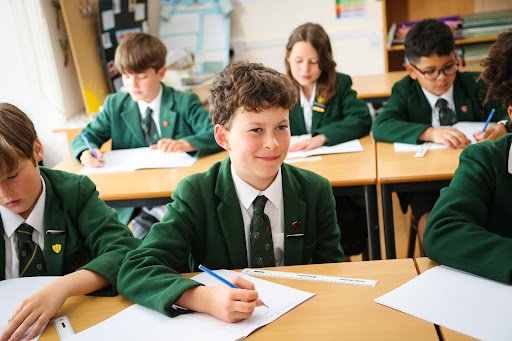Schools Around the World
What comes to mind when one envisions the concept of school can vary greatly from person to person, influenced by factors such as place of birth and upbringing. Education may take many shapes & sizes but is always critical in the fight to end extreme poverty. Education is viewed as a catalyst for enabling children to attain a life different from that of their parents. Schools are the crucible of positive change in our world.
Nonetheless, it is a stark reality that approximately 263 million children worldwide remain without access to education. To celebrate how life-changing education really is, here is a snapshot of what it looks like in different countries around the world.
India
According to UNICEF, around 8.1 million children are not attending school in India, further highlighting a pronounced gender disparity with male literacy at 75% and female literacy at 54%, as reported by the India-based NGO Tarang.
Sudan
Sudan grapples with an educational crisis, as an estimated 3 million children between the ages of 5 and 13 do not have access to schooling, making it one of the regions with the highest number of out-of-school children in the Middle East and North Africa according to UNICEF. While 76% of children manage to attend primary school, this figure significantly diminishes to 28% at the secondary school level.
Syria
The ongoing conflict in Syria has taken a heavy toll on its educational infrastructure, with over one-third of schools suffering damage or destruction, according to UNICEF. Some schools have been repurposed as collective shelters or for alternative uses. Nearly one-third of school-age children between 5 and 17 are out of school, and an additional 1.3 million are at risk of dropping out.
Afghanistan
Afghanistan witnessed a substantial increase in school enrollment between 2001 and 2011, rising from 900,000 to 8.3 million, largely due to the weakening of Taliban control and the global community supported the country with aid money. However, only 41% of schools in the country have actual buildings, and more than a third of school-aged children are unable to attend, exposing them to child marriage, forced labor, and radicalization.
United States
While the United States invests more in education than any other nation, a 2016 UNICEF report ranked it 10th globally in terms of educational equality between affluent and impoverished children.
Senegal
Senegal also experiences a pronounced gender-based disparity in literacy rates, with 74% of males aged 15 to 24 capable of reading, according to UNICEF, compared to just 56% of their female counterparts.
Pakistan
Pakistan, the home country of Malala Yousafzai, houses the second-largest population of girls not attending school worldwide, according to the Malala Fund. Particularly, girls from impoverished rural backgrounds are 16 times less likely to access secondary education compared to boys from more affluent households.
United Kingdom
In the Britain, compulsory education spans from ages five to sixteen, and the UK is home to two of the world's top ten universities. Remarkably, 99.9% of Britons aged 25 or over have received a secondary education.
Nepal
Nepal's education system suffered severe damage due to the devastating 2015 earthquake, resulting in the destruction of up to 8,000 schools and the disruption of education for approximately one million children. While progress has been made, efforts are ongoing to ensure that every child, especially those in remote regions, can access quality education.
Honduras
Honduras exhibits some of the lowest educational indicators in the Latin American and Caribbean regions, with a mere 30% of children progressing to high school.
Côte d'Ivoire
Côte d'Ivoire faces a dire situation where, according to UNICEF, nearly one in two children between the ages of 6 and 11 is not attending school, particularly emphasizing the disparity between urban and rural areas, with 66% to 48%. This low rate of education is primarily attributed to the shortage of teachers and proper school facilities, and even those who do attend school do not always receive quality instruction.
Japan
On the other hand, Japan stands as one of the world's highest-performing countries in literacy, science, and mathematics, as reported by the World Economic Forum. Japanese students complete six years of elementary school,
Cambodia
Despite an 85% primary school attendance rate for boys and 83% for girls in Cambodia, these numbers decrease significantly for secondary school, standing at 39% for boys and just 35% for girls, according to UNICEF.














